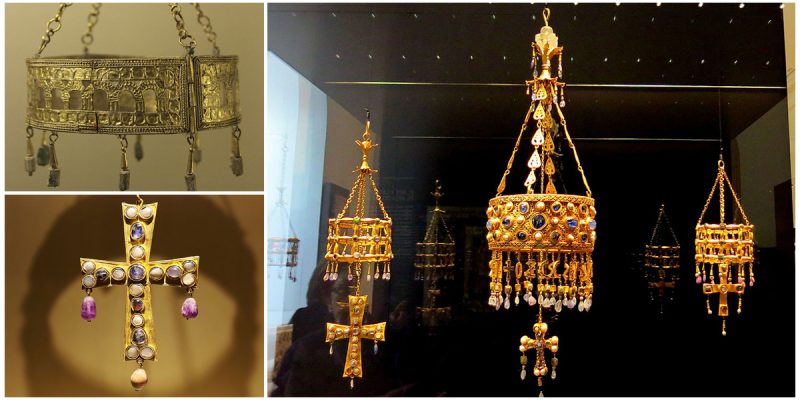The Treasure of Guarrazar was found in Spain in the Guadamur municipality, close to the Province of Toledo.
It is one of the most important Visigothic treasures which includes votive crowns and crosses from the 7th century. The Kings of the Visigoths in Hispania initially offered this treasure to the Roman Catholic Church. The most important crowns from the hoard are the votive crowns of King Reccesuinth and King Suinthila decorated with blue sapphires and pendilia.
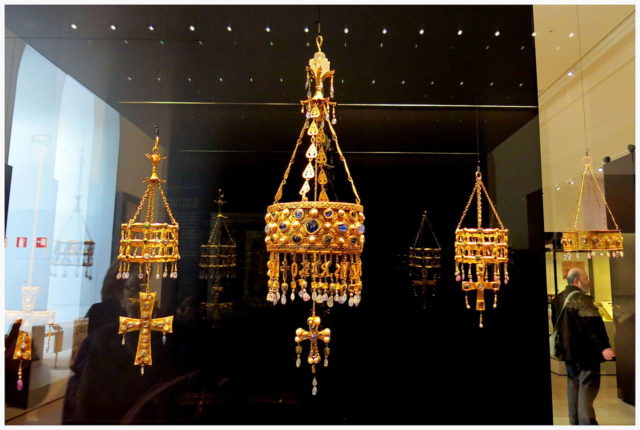
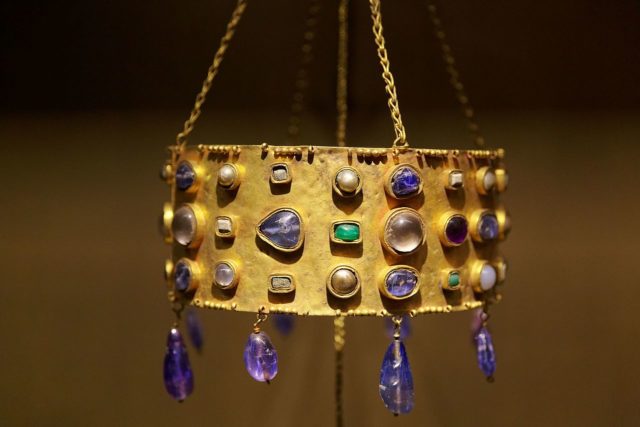
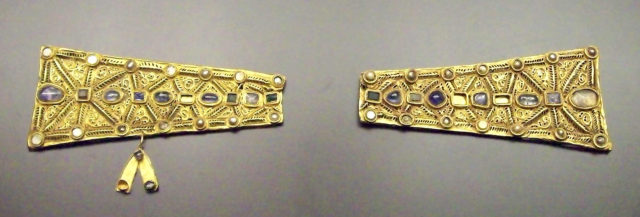
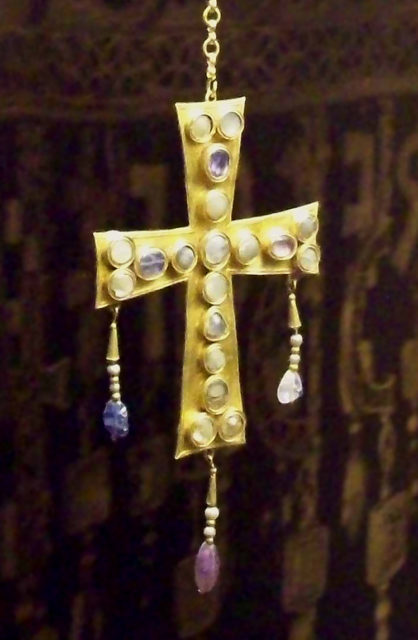
It was discovered between 1858 and 1861 in Guarrazar, and it was divided into two parts. Some of the objects were given to the Musee de Cluny in Paris, while the rest to the National Archaeological Museum of Spain. Many objects from the hoard disappeared because they were stolen somewhere between 1921 and 1936.
The jewelry is adorned with sapphires and garnets, made in a Byzantine-Germanic style. However, the crowns were made purely in Byzantine style. They were gifts for the church which were never meant to be worn. These crown were hung over the altar of the church and used for major liturgical ceremonies.
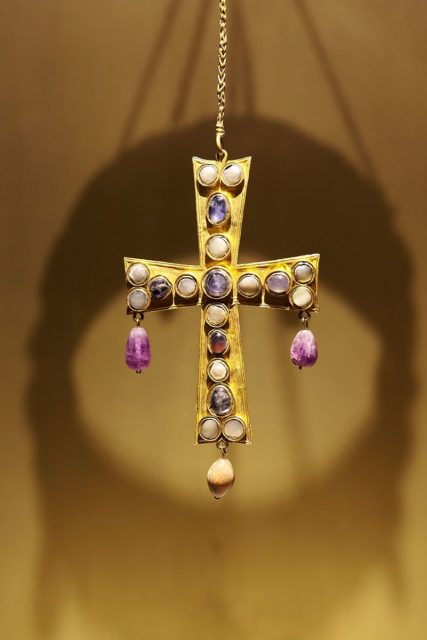
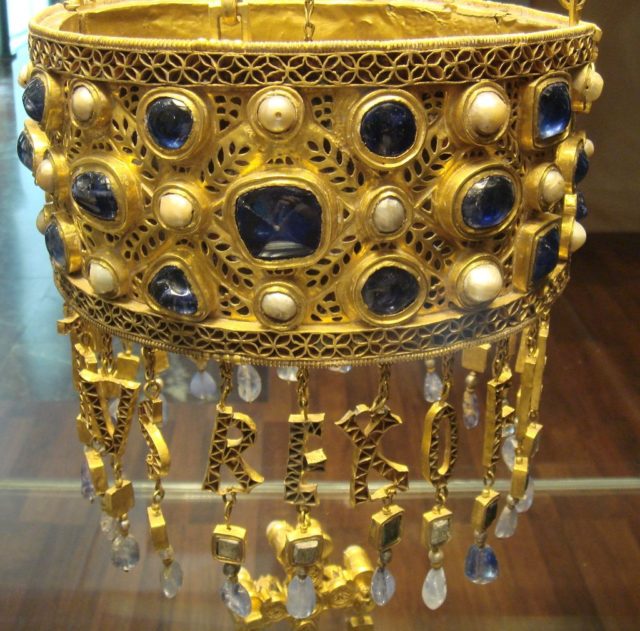
The two most important crowns of the kings mentioned before are the most valuable remainings of the treasure. Unfortunately, in 1921 the crown of King Suinthila was stolen and had never been recovered. Among the other jewelry in the original find, there were belts which also were taken. On the site where the hoard was found, fragments of sculptures and remains of a Roman sanctuary were excavated.
This sanctuary housed many graves and one of them, which was the best-preserved skeleton, was found lying on a bed of sand and lime. Some historians believe that the treasury was buried in a graveyard to be protected from the Arabs. Archaeologists also found a slate from 693 with a Latin inscription which today can be seen in the National Archaeological Museum of Spain.
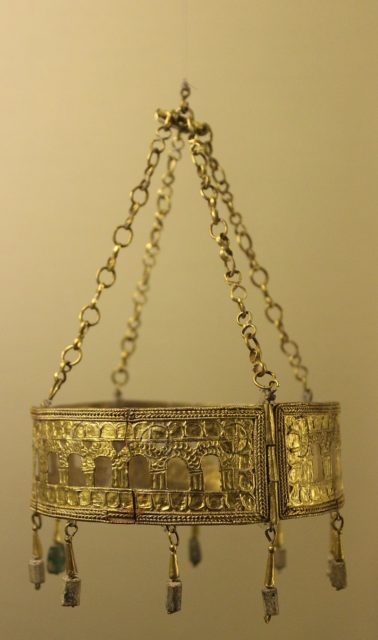
It is the greatest Visigoth treasure in the Iberian Peninsula.Currently, the cache includes the Crown of King Recceswinth, nine crosses, ten smaller crowns, sixteen pendants, and chains and it is spread across European museums including the National Museum of the Middle Ages in France where two crosses, three crowns, gold pendants, and links are on display.
The National Archaeological Museum of Spain includes five crosses and six crowns, remnants of foil and pendant, while in the Royal Palace of Madrid the crown of King Reccesuinth is on display.
